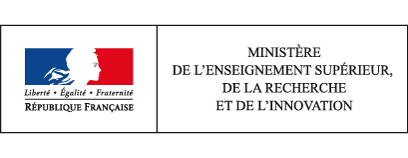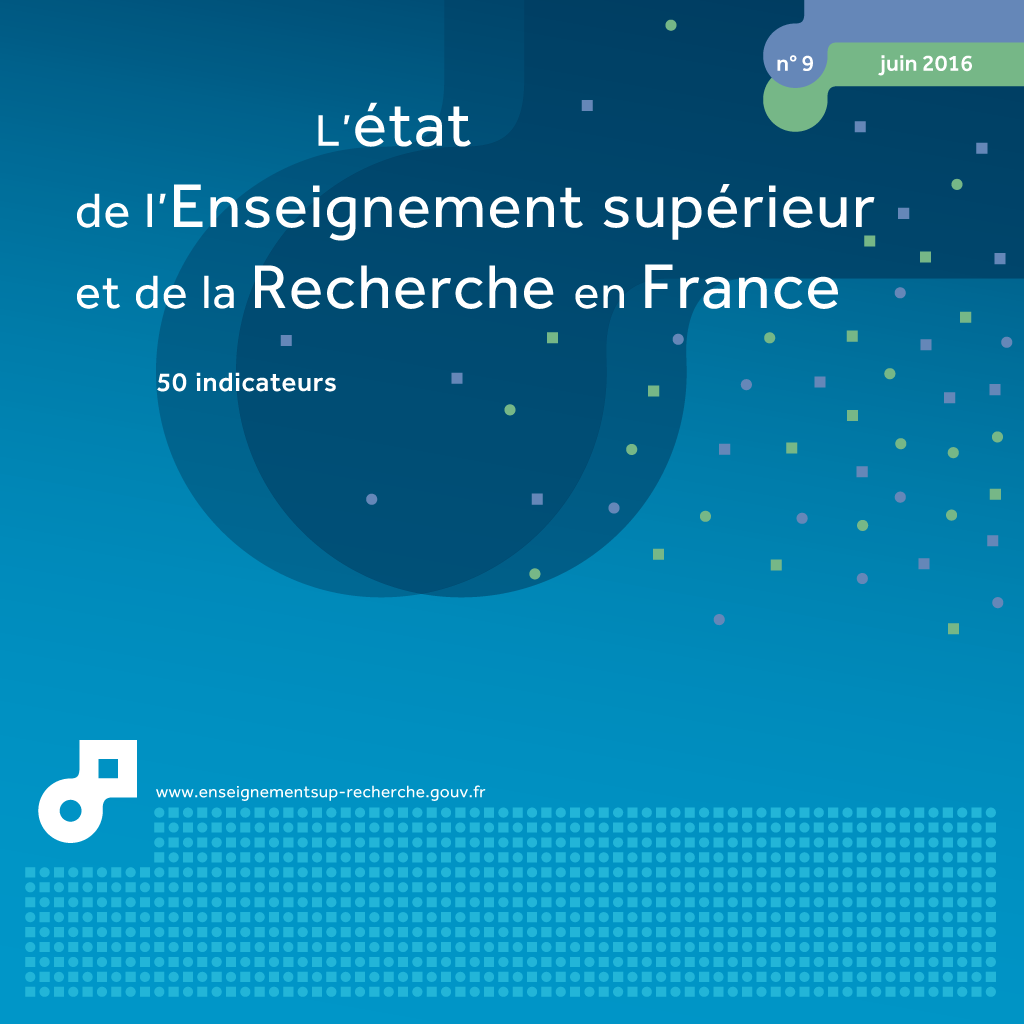38 researchers in business enterprises
This page has been updated. Read 37. researchers in business enterprises in Higher education & research in France, facts and figures 10th edition - June 2017
In 2013, almost 220,000 researchers were involved in R&D activity in business enterprises in France. This is a young population, with a low proportion of women (20%), the majority with an engineering degree. In business enterprises, only 12% of researchers have a PhD and 17% have a Master's degree. The socio-economic characteristics of researchers, however, depend on the company's sector of research.
In France in 2013, 220,000 researchers (headcount) were working in a business enterprise. The population of researchers in business enterprises is still young: half of researchers are under 38, compared with 42 overall for managers in business enterprises (chart 38.01). However, in two years, there has been a slight shift in businesses towards the higher age bands: 16.6% of researchers were aged 50 and over in 2013, compared to 15.5% in 2011 (the same change, +1 point, was noted for managers).
In 2013, 54% of researchers had graduated from an engineering school (chart 38.02). Although there was a greater proportion of PhD holders in public research organisations, higher education or non-profit institutions, doctoral graduates only represented 12% of researchers in the private sector. A quarter of these had a PhD in medical sciences. In addition, among PhD graduates, excluding those with a PhD in medical sciences, around 30% obtained their PhD after first obtaining a qualification in an engineering school. 17% of researchers held a Master's degree (or Diploma of advanced studies (DEA)/Specialised graduate diploma (DESS)) in 2013. This increased by one point in two years. By working in research in business enterprises, it is also possible to obtain validation of professional experience: 8% of researchers have a level of study below that of a Bachelor's degree. Finally, 2% of researchers were graduates from foreign universities (nearly one quarter at PhD level).
Four out of five researchers in business enterprises work in 'Engineering sciences' or 'Mathematics-Software-Physics' (chart 38.03). In contrast, fewer than 3% work in the 'Social sciences', 'Earth Sciences' or 'Humanities'. In 2013, the 'Computer services' and "Scientific and technical activities' research sectors employed over a quarter of business enterprise researchers, which are a young population (median age of 34). In the 'Communication Equipment', 'Measurement appliances' and 'Pharmaceutical industry', the median age of researchers is over 42. Most researchers with a healthcare PhD work in the pharmaceutical sector (61%). Excluding healthcare, the 'Scientific and Technical Activities' sector employs the largest proportion of PhD graduates (19%).
In business enterprises, one in five researchers are women. The younger generations contain slightly more women: 23% of researchers under 30 are women (chart 38.04a and chart 38.04b). Like male researchers however, their population has discreetly aged. 30% of female researchers in business enterprises are concentrated in two sectors of research: 'Scientific and Technical Activities' and 'Pharmaceutical industry' (the respective levels of women are 23% and 59%).
Compared to their male colleagues, fewer women researchers are engineers (43% compared with 57%). Among business enterprise researchers, there are more women than men in the 'Medical sciences' and 'Biological sciences' sectors.
In 2013, 5% of business enterprise researchers working in France were foreign nationals and half of these were from European Union member states. In business enterprises, over a quarter of foreign researchers were women.
How to cite this paper :
close
Key figures
Whole of France
Whole of France
Whole of France
Whole of France
Whole of France
38.01 Breakdown by age bracket of researchers and managers in business enterprises in 2013 (%)
1 Median age of researchers, 38 years.
2 Median age of managers, 42 years.
3 2012 data.
Insee
You can embed this chart to your website or your blog by copying the HTML code and pasting it into the source code of your website / blog:
close
38.02 Breakdown by highest qualification and gender of researchers in business enterprises in 2013 (%)
You can embed this chart to your website or your blog by copying the HTML code and pasting it into the source code of your website / blog:
close
38.03 Breakdown of researchers in business enterprises according to their field of research and proportion of women per subject area in 2013 (%)
1 Electrical engineering, electronics, computer sciences, automation, signal processing, photonics, optronics.
2 Civil engineering, mechanics, materials engineering, acoustics, fluid mechanics, thermal physics, energy, process engineering.
You can embed this chart to your website or your blog by copying the HTML code and pasting it into the source code of your website / blog:
close
38.04a Age pyramid for researchers in business enterprises in 2013
You can embed this chart to your website or your blog by copying the HTML code and pasting it into the source code of your website / blog:
close
38.04b Share of women according to age among researchers in business enterprises in 2013 (%)
You can embed this chart to your website or your blog by copying the HTML code and pasting it into the source code of your website / blog:
close
Related statistical publications
 Note d'information SIES 16.05 - Researchers in business enterprises in 2013 - Laurent Perrain - July 2016
Note d'information SIES 16.05 - Researchers in business enterprises in 2013 - Laurent Perrain - July 2016 The corresponding workforce is 162,000 full-time equivalent (FTE), or 61% of all researchers working in France. This proportion is much higher (+13 points) than the European average.
The professional activity of researchers in business enterprises has changed: in 2013, they devoted 73% of their average annual working time to R&D, compared to 95% up to 2005. In addition, they only benefit from 0.6 FTE support personnel per year to help them with their research work, half the level recorded in 2001. Researchers in business enterprises are relatively young (half are under 38 years of age), mostly male (80%) and engineering graduates (54% compared to 12% of PhD graduates).
However, this average profile depends on the size of the company and above all its research sector.

 Note d'information SIES 14.04 - Researchers in business enterprises in 2011 - Laurent Perrain - July 2014
Note d'information SIES 14.04 - Researchers in business enterprises in 2011 - Laurent Perrain - July 2014 While the population of researchers increased significantly, the number of supporting staff decreased, as did the overhead allocated to research.
As a result, the 'global' cost of a researcher (measured as the ratio of intramural business enterprise R&D expenditure to number of researchers) decreased substantially over the decade, mainly due to the drop in the level of support from supporting staff.
The research population in business enterprises remained young, with most being trained in engineering schools. There were fewer women (one in five researchers).
Translation
 Etat de l'enseignement supérieur et de la rechercheL'état de l'Enseignement supérieur et de la Recherche en France n°9 - Juin 2016
Etat de l'enseignement supérieur et de la rechercheL'état de l'Enseignement supérieur et de la Recherche en France n°9 - Juin 201638 - les chercheurs en entreprises - Laurent Perrain






